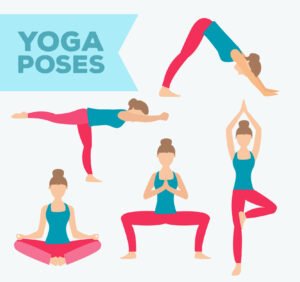heat stroke treatment at home and What not to do for heat stroke?
Table of Contents

heat stroke treatment at home and What not to do for heat stroke?
heat stroke treatment at home and What not to do for heat stroke? What not to do when treating heat stroke? How to cure heat stroke at home? What precautions should be taken during heat stroke? What to drink for heat stroke? What is the fastest way to cure heat stroke? What is the fastest way to recover from heat stroke? Who is at risk of heat stroke? How long does heat stroke last? How long is the recovery time for a heat stroke?
Heat stroke treatment at home and What not to do for heat stroke?
What is the proper treatment for heat stroke?
🚨 Heat stroke emergency! 🚨
- Call 911 immediately.
- Move to a cool place 🏠.
- Cool the body: wet cloths, ice packs, fans ❄️.
- Give small sips of water if conscious 💧.
- Monitor until help arrives.
Heat stroke treatment at home
Treating heat stroke at home is critical before professional medical help arrives. Heat stroke is a severe condition where the body overheats, often due to prolonged exposure to high temperatures or physical exertion in hot environments. Here are steps to provide immediate care:Immediate Actions
1. Call Emergency Services:
Heat stroke is a medical emergency. Dial emergency services (like 911) immediately.2. Move to a Cooler Environment:
Get the person into an air-conditioned building or at least into the shade. Remove excess clothing to help cool down.3. Cool the Body:
Use any available methods to lower the person’s temperature:-
- Cool Water: Immerse the person in a bathtub of cool (not cold) water, if available.
- Wet Cloths: Place wet towels or cloths on the body, or use a sponge to apply cool water.
- Ice Packs: Place ice packs on the neck, armpits, and groin. These areas have many blood vessels close to the skin, which helps cool the body more efficiently.
- Fans: Use fans or other means to circulate air around the person.
4. Hydrate:
If the person is conscious and able to swallow, provide cool water or a sports drink to help rehydrate and restore electrolytes. Avoid giving sugary, caffeinated, or alcoholic beverages, as these can dehydrate further.Monitoring and Additional Care
- Monitor Temperature:
- Watch for Complications :
Prevention Tips
- Hydrate Properly:
- Avoid Overexertion:
- Wear Appropriate Clothing:
- Stay Cool:
When to Seek Medical Attention
- Always seek medical help for heat stroke as it can cause serious complications or be fatal if untreated. While home treatment can help stabilize the condition, professional medical evaluation and care are essential.
what is world meditation day? How to celebrate World meditation Day? Detailed Plan
what-is-world-meditation-day-how-to-celebrate-world-meditation-day-detailed-plan
Expanded Example Scenario of Treating Heat Stroke at Home
Scenario Description
John, a 35-year-old man, has been working in his garden on an exceptionally hot day. After several hours, he starts to feel dizzy, extremely thirsty, and his skin feels hot and dry. His wife, Sarah, finds him confused and stumbling, realizing he may be suffering from heat stroke.Detailed Immediate Actions
- Call Emergency Services
- Sarah immediately calls 911, describing John’s symptoms: confusion, lack of sweating, and hot, dry skin. She mentions they have been outside in the heat for hours. The dispatcher confirms an ambulance is on the way and advises her to start cooling John down immediately.
- Move to a Cooler Environment
- Sarah helps John inside their air-conditioned house, guiding him to lie down on the cool tile floor of their kitchen. She removes his shoes, socks, and excess clothing to facilitate cooling.
- Cool the Body
- Cool Water: Sarah fills the kitchen sink with cool water and soaks several towels.
- Wet Cloths: She places the soaked towels on John’s forehead, neck, armpits, and groin. She also uses a sponge to dab cool water on his face and limbs.
- Ice Packs: Sarah finds ice packs in the freezer, wraps them in thin cloths to avoid ice burns, and places them under John’s armpits and groin.
- Fans: Sarah positions a fan to blow directly on John, enhancing the cooling effect of the wet cloths and ice packs.
- Hydrate
- John is conscious but lethargic. Sarah carefully gives him small sips of cool water, ensuring he doesn’t drink too fast. She avoids giving him sugary or caffeinated drinks.
Detailed Monitoring and Additional Care
- Monitor Temperature: Sarah uses a digital thermometer to check John’s temperature, which reads 104°F (40°C). She keeps an eye on it, ensuring it starts to decrease with the cooling measures.
- Watch for Complications: Sarah monitors John’s breathing, responsiveness, and overall condition. She notices his skin starting to feel cooler and slightly damp, a sign that the cooling measures are working. If John were to become unconscious, she would turn him on his side to maintain an open airway and be ready to perform CPR if necessary.
Arrival of Medical Help
- Informing Medical Personnel: When the paramedics arrive, Sarah quickly briefs them on John’s initial symptoms, the steps she took to cool him down, and his current condition. She mentions any relevant medical history, such as if John has any chronic illnesses or medications that might affect his heat regulation.
Prevention Tips Implemented Afterwards
- Hydrate Properly: Sarah ensures John drinks plenty of water before starting any outdoor activities. She sets reminders for regular hydration breaks.
- Avoid Overexertion: They plan heavy yard work for cooler parts of the day, like early morning or late evening, avoiding the peak heat.
- Wear Appropriate Clothing: John now wears light, loose-fitting clothing and a wide-brimmed hat to protect himself from direct sun exposure.
- Stay Cool: They set up shaded areas in the garden and take frequent breaks indoors or in the shade to avoid prolonged heat exposure.
Summary
In this expanded scenario, the key steps are:- Immediate Medical Contact: Calling emergency services right away.
- Relocating to a Cool Environment: Moving John to an air-conditioned space.
- Active Cooling Measures: Using cool water, wet cloths, ice packs, and fans to lower his body temperature.
- Hydration: Providing small sips of cool water if the person is conscious.
- Monitoring: Keeping a close watch on vital signs and symptoms until help arrives.
Tweet Breakdown
🚨 Heat stroke emergency! 🚨- Alert: This line grabs attention and indicates the urgency of the situation. The siren emojis emphasize the emergency nature.
- Call 911 immediately.
- First Step: The most crucial first action is to contact emergency services. Calling 911 ensures that professional medical help is on the way.
- Move to a cool place 🏠.
- Second Step: This step involves getting the person out of the hot environment and into a cooler area. The house emoji represents moving indoors or to a shaded, cooler location.
- Cool the body: wet cloths, ice packs, fans ❄️.
- Third Step: Describes immediate cooling measures. Using wet cloths, ice packs, and fans helps lower the person’s body temperature quickly. The snowflake emoji symbolizes cooling.
- Give small sips of water if conscious 💧.
- Fourth Step: Hydration is crucial if the person is awake and can drink. Small sips of water prevent dehydration. The water droplet emoji highlights this step.
- Monitor until help arrives.
- Fifth Step: Emphasizes the importance of continuous monitoring. Keeping an eye on the person ensures you can report any changes to medical responders when they arrive.
- Closing Line and Hashtag: A reminder to be cautious in hot weather to prevent heat stroke. The hashtag aims to raise awareness about the condition and its dangers.
Explanation of Each Action
- Call 911: Ensures professional medical responders are on their way.
- Move to a Cool Place: Reduces further exposure to heat, helping to prevent the condition from worsening.
- Cool the Body: Immediate cooling is essential to bring down the body temperature, preventing damage to organs.
- Give Small Sips of Water: Rehydration is key but should be done carefully to avoid choking or vomiting.
- Monitor: Watching the person’s condition helps you provide accurate information to the paramedics and ensures you can react to any critical changes.
top 10 health benefits and side effects of consuming pistachio
top-10-health-benefits-and-side-effects-of-consuming-pistachio
Heat stroke treatment at home and What not to do for heat stroke?
What not to do for heat stroke?
🚫 Heat stroke don’ts! 🚫 ❌ No cold water immersion unsupervised. ❌ Avoid direct ice pack on skin. ❌ Don’t overhydrate too quickly. ❌ Skip caffeinated/alcoholic drinks. ❌ Assume improvement ≠ recovery. ❌ Stay out of hot environments. ❌ No heating pads or hot water bottles. ❌ Don’t delay seeking medical help. Stay safe! #HeatSafety Stay safe in the heat! #HeatStrokeAwareness
When dealing with heat stroke, there are certain actions you should avoid as they can worsen the condition or cause further harm. Here are some things not to do for heat stroke:
- Don’t Ignore Symptoms: Heat stroke is a medical emergency. Ignoring symptoms or delaying treatment can lead to serious complications or even death. Take immediate action if someone shows signs of heat stroke.
- Don’t Use Cold Water Immersion if Unsupervised: While cooling the body with cold water is effective, avoid immersing someone in cold water if they are unconscious or if supervision is unavailable. Without proper monitoring, there’s a risk of drowning or further complications.
- Don’t Use Ice Packs Directly on the Skin: Ice packs or cold packs can be helpful in cooling the body, but never apply them directly to the skin. Wrap them in a cloth or towel to prevent ice burns or frostbite.
- Don’t Overhydrate Too Quickly: While it’s important to rehydrate someone with heat stroke, avoid giving large amounts of water too quickly. This can lead to vomiting or hyponatremia (low sodium levels in the blood), which can be dangerous.
- Don’t Give Caffeinated or Alcoholic Beverages: Beverages containing caffeine or alcohol can contribute to dehydration and should be avoided. Stick to water or electrolyte-rich drinks like sports drinks.
- Don’t Assume Improvement Means Recovery: Even if the person’s condition seems to improve after initial treatment, it’s essential to seek medical evaluation. Heat stroke can cause internal organ damage or other complications that may not be immediately apparent.
- Don’t Stay in Hot Environments: If you or someone else is experiencing symptoms of heat stroke, don’t remain in a hot environment. Move to a cooler place as soon as possible.
- Don’t Apply Heat: Avoid applying heat to someone with heat stroke. This includes heating pads or hot water bottles, as they can further raise body temperature and worsen the condition.
- Don’t Leave Children or Pets in Hot Vehicles: Temperatures inside a parked car can quickly rise to dangerous levels, leading to heat stroke or even death. Never leave children, pets, or anyone else in a parked vehicle, even for a short time.
- Don’t Delay Seeking Medical Help: Even if symptoms seem to improve with home treatment, don’t delay seeking professional medical evaluation. Heat stroke can cause serious complications that require medical attention.
Post Views: 168


















Post Comment